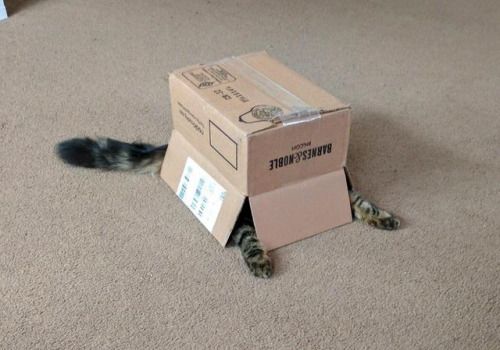5 Ways to Keep Indoor Cats Happy and Stimulated

Cats are adorable! They're small. They're round. They're fluffy. And they're also pretty much hardwired to be tiny killing machines. As tame and trained as our domestic feline friends may seem, there is no denying that they still have a wild side. That's why it's important to provide enrichment for your indoor cats, especially those who used to be indoor/outdoor.
Domestic cats are still driven by their natural instincts, passed down for generations from their wild ancestors. Even though our friendly balls of fluff have never actually hunted in the jungles or stalked the deserts of Africa, those wild instincts are still present in our cats today -- and these instincts help explain common cat behaviors that baffle us humans.
1. Satisfy Their Prey Drive

Cats are hardwired to hunt and stalk prey, even if they have food available to them every day. In fact, hunting and stalking help keep your cat’s mind and body strong and healthy in an environment that can easily become unstimulating and boring to a cat.
For ideas about how to satisfy your cat’s natural hunting instincts, consider toys that imitate the movements of real prey. And if your cat has a really high prey drive, they might need some mental stimulation even when you aren’t home to play. Check out these battery-operated toys or consider adding a food puzzle into their meal routine.
2. Provide Them Plenty of Safe Scratching Areas

A common issue with indoor cats (and even indoor/outdoor cats) is unwanted furniture scratching. But it's important to know that your cat isn’t scratching the arm of your sofa out of a wanton desire for destruction. Scratching is a vital part of a cat's exercise, stimulation, and physical stress relief. And believe it or not, cats actually scratch as a form of communication to other cats – and us humans, if we know how to read cat. By leaving a visual mark on visible areas of the house (the ends of couches or chairs, for instance), your cat is letting anyone and everyone know that a cat lives here and that this is their territory. If your cat is a problem scratcher, some solutions are providing them with a positive scratching alternative, like a scratcher.
Find a scratcher that works for your cat, as some cats have different scratching preferences. If you notice your cat scratching on your carpet or rugs, try a scratcher that lays on the floor. If they focus more on the arms of couches, a hanging scratcher or pole scratcher might be a better fit.
3. Provide Fresh Flowing Water

Does your cat prefer fresh, running water to their water bowl? Do they come running anytime you turn on the sink? Your cat's instincts might be telling them that an old, stagnant bowl of water could be contaminated and unhealthy to drink.
Most of us also naturally place our cat's food and water bowls next to each other. But this placement can actually go against a cat's natural instinct to keep food and water separate. In the wild, cats will often go to great measures to keep their food and water sources separate to avoid having the food contaminate the water.
Try a circulating water fountain designed for cats that prefer running water to encourage your cat to drink more - without you having to leave the faucet running!
4. Give Them High Perches

Perching helps cats stay safe from predators while they keep a close eye on their surroundings and potential prey. Even cats who don’t live with other animals (potential predators) or have regular access to live prey have an innate desire to perch high. If you have a cat who prefers to perch up high, consider installing cat wall shelves or offering a sheltered cat tree from which to perch.
5. Give Them Hideaways

Ever wonder why cats love cardboard boxes so much?
Even though our friendly little house cats are considered domesticated, they are still governed by their natural instincts, passed down for generations from their wild ancestors in the deserts of Africa. Following in these sandy pawprints, cats naturally seek out sheltered, covered hideouts from which to stalk their prey. Cats are ambush predators, and cardboard boxes (or other covered beds) provide the ideal hiding spot from which to pounce on unsuspecting mice (be they real or stuffed with catnip.)
Be sure to provide your fine feline with plenty of hidey-holes so they can happily tuck themselves away every now and again when times are stressful. And if you don't prefer leaving an old cardboard box around? Try a covered cat bed, like a teepee bed, which provides shelter and doesn't stick out like a sore thumb.



















Leave a comment